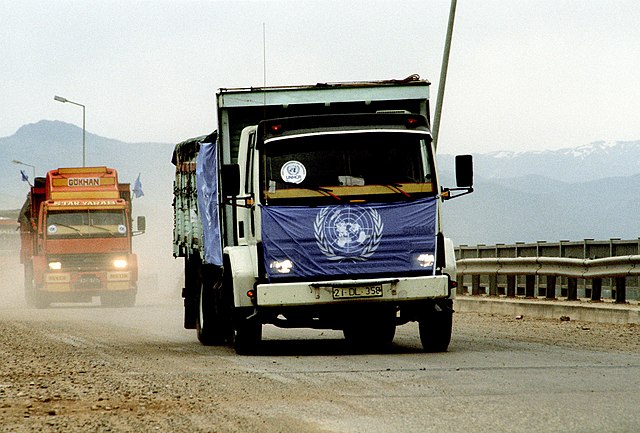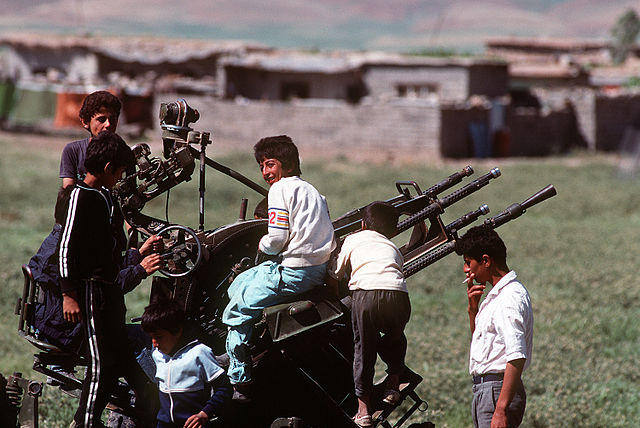Operation Provide Comfort
Operation Provide Comfort and Provide Comfort II were military operations initiated by the United States and other Coalition nations of the Persian Gulf War, starting in April 1991, to defend Kurdish refugees fleeing their homes in northern Iraq in the aftermath of the Gulf War, and to deliver humanitarian aid to them. The no-fly zone instituted to help bring this about would become one of the main factors allowing the development of the autonomous Kurdistan Region.
Commemorative medallion issued to some participating US soldiers
Then-Lt. Col. John Abizaid speaking with some Kurds in Northern Iraq during Operation Provide Comfort, 1991
Kurdish refugee children run toward a CH-53G helicopter of the German Army during Operation Provide Comfort
As seen from the cockpit of a Fighter Squadron 41 (VF-41) F-14A Tomcat aircraft, a Fighter Squadron 84 (VF-84) Tomcat, background, and another VF-41 Tomcat fly in formation at an aerial refueling meeting point during Operation Provide Comfort
The 1991 Iraqi uprisings were ethnic and religious uprisings against Saddam Hussein's regime in Iraq that were led by Shi'ites and Kurds. The uprisings lasted from March to April 1991 after a ceasefire following the end of the Gulf War. The mostly uncoordinated insurgency was fueled by the perception that Iraqi President Saddam Hussein had become vulnerable to regime change. This perception of weakness was largely the result of the outcome of the Iran–Iraq War and the Gulf War, both of which occurred within a single decade and devastated the population and economy of Iraq.
An Iraqi government tank disabled by rebels
U.S. Gulf War leaflet depicting Saddam Hussein as Death
UNHCR trucks with aid supplies for Kurdish refugees, 29 April 1991
Kurdish children in a refugee camp built during the U.S. and coalition Operation Provide Comfort play on a ZPU gun which was abandoned by Iraqi forces during Operation Desert Storm, 1 May 1991








